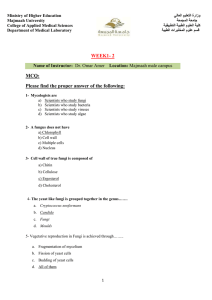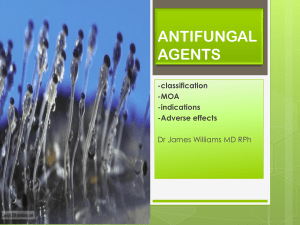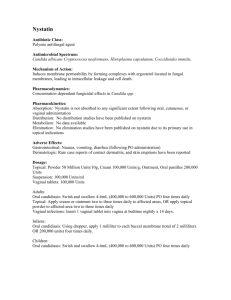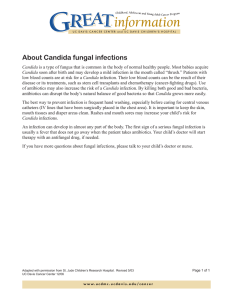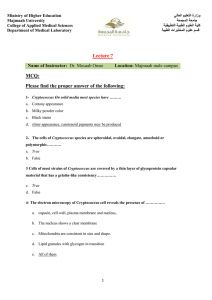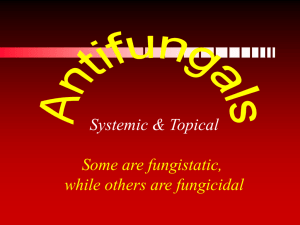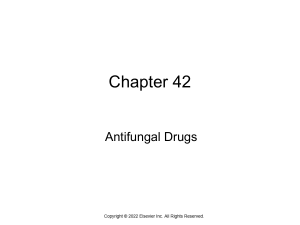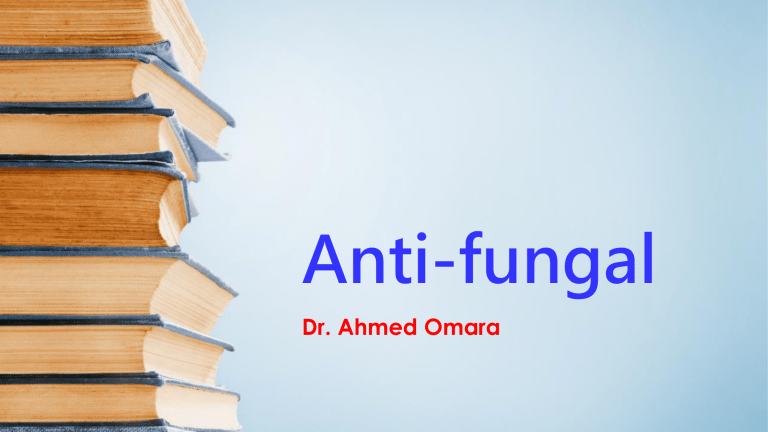
Anti-fungal Dr. Ahmed Omara تقسيمة اجتهادية لسه هاجيب تقسيمة انضف Inhibtion of cell membrane synthesis: - Amphotracin B & nystatin - Imidazoles Inhibition of nucleic acid synthesis 5 ′ -fluocytosine Amphotericin and nystatin Amphotericin and nystatin belong to the polyene group. They bind to ergosterol in fungal cell membranes, changing ionic transport and affecting permeability of the fungal cell wall, leading to cell lysis. Route of Amphotericin: intravenously (can NIT be absorbed from the gut) Ocular penetration is poor and when used topically it can be painful. It is active against Candida, Aspergillus, Cryptococcus, Histoplasma, Coccidioides and Blastomyces. Side effects can include anaemia and nephrotoxicity. Nystatin is isolated from Streptomyces noursei. It is active against Candida, Cryptococcus, and the Trichophyton group. It can be fungicidal or fungistatic. Imidazoles Imidazoles are a group of broad-spectrum synthetic antimycotic agents. They inhibit ergosterol production by acting on the cytochrome P45o Fluconazole is effective againstCandida, Cryptococcus neoformans, and Histoplasma capsulatum. Fluconazole is ineffective in Aspergillus and Mucor. Itra-conazole is effective in Aspergillus species. Newer triazole agents such as variconazole can now be used in immunocompromised patients in the treatment of invasive aspergillosis and Candida infections. Azoles can cause abnormalities in liver function and hepatotoxicity (ketaconazole). 5 ′ -fluocytosine 5′-fluocytosine is converted in fungal cells to 5-fluorouracil, which is incorporated instead of uracil into fungal RNA. This leads to inhibition of DNA synthesis. It is effective against Candida and Cryptococcus Can be administered orally or intravenously. It penetrates cerebrospinal fluid and tissue well.
